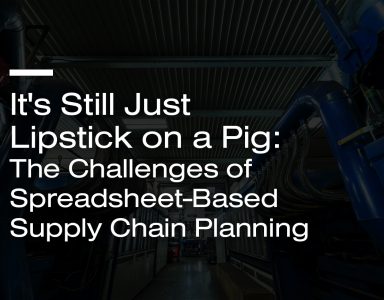Then the Supply Chain weenie in me took over. I wondered how many bagels, cakes, and cookies were left over each night. What did they do with these goods? Baked goods are really only salable the day they are baked and as these items were sitting in open air displays and not packaged, they literally have a one day shelf life. Did they throw them out? Do they donate them? How much excess did a store like this end up with each day?
Then I saw a couple of employees, John, the manager with clipboard in hand, and the counter lady who made my sandwich, counting the bagels. My passing interest turned a bit more serious. How often were they counting the bagels? How did they use the data for that day? Was this for establishing trends? I finished my sandwich and spent a few minutes talking to John. I had so many questions for him; here is a summary of our discussion.
What do you do with all the leftovers at the end of the day? John said that he hated to throw out food but would if there were no other choice. There were a few charities that happily take the excess but they are not always available to make a pick-up. When they are not, they toss the goods into the trash.
How do you decide what to make, when, and how much? The bagel shop initiated a tally sheet count method, done hourly to track the sale of each SKU. John then decides what to make and how much. He pointed to a five cheese bagel. He only sells four or five of these a day. His batch size for this bagel and many others was one. Next time I am there I am going to have to get a tour of their kitchen and pantry.
It sounds like a good system: John did like the system, yet he talked about the variation in demand and random spikes. For example, today was a Thursday and Thursdays are usually very good. But, it was a nice day and people were simply not coming into the store. The random spikes are when sports teams from the nearby high school or recreation teams descend on the shop. They can completely wipe out the inventory on hand which, as in any business, is a good thing (a spike in sales) and then a bad thing (as we scurry to replenish).
Bakery shops like to have a bountiful look behind the glass at all times: John confirmed this was part of the stores policy and it is designed to have both a good look and availability of the entire menu all day. I told John about a corner bakery when I was growing up in Detroit. It was family owned. They did all their baking in the morning before opening the store. That became their inventory for the day. They would prefer to sell out of everything, but not too early. Excess at the end of the day went into the day old bin at 50-75% cost reduction. Anything in the day old bin was tossed at the end of the day.
John said several times in our short conversation that it was hard to predict the future. I nodded knowingly but thinking “wow… his planning horizon is an hour and he has the same frustration many of us have planning the next month.”


